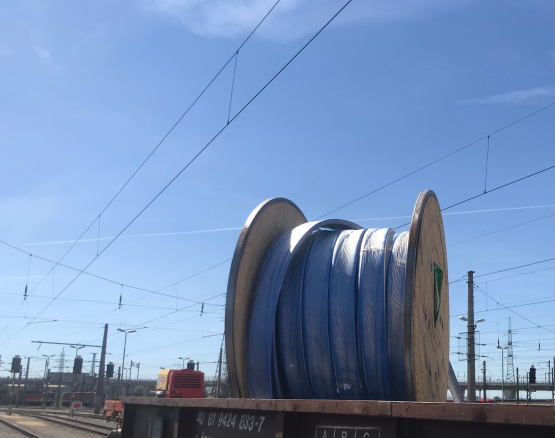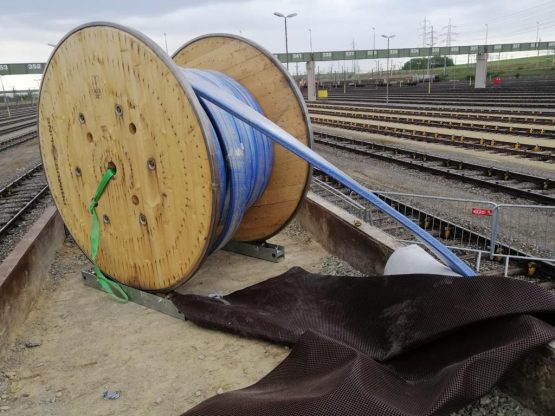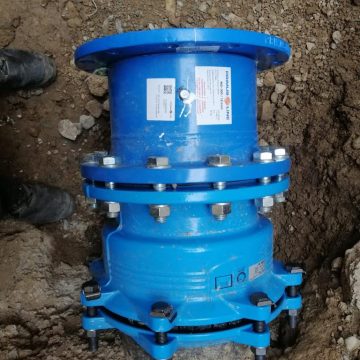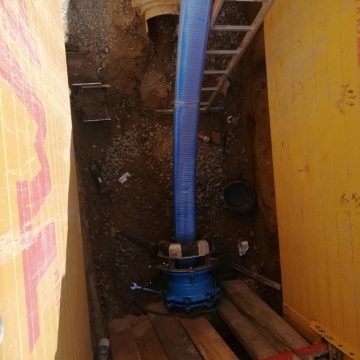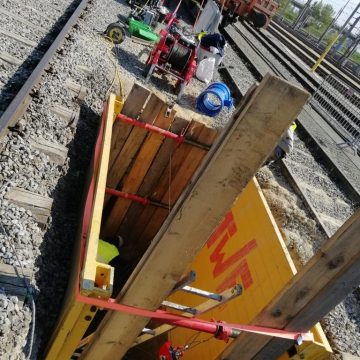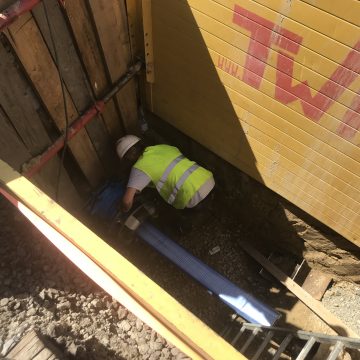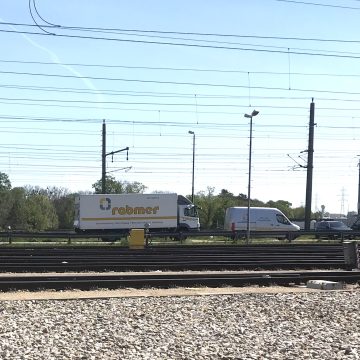Pipe renovation: Challenging renovation of extinguishing water pipes under tracks
The pipe renovation experts from the Rabmer team have just successfully completed an exciting project in Vienna: Extinguishing water pipes (DN 250) 110m and 160m in length running under the ÖBB marshalling yard had to be renovated. The challenge was to work as excavation-free as possible and without large equipment, as the pipes run directly underneath the tracks. There was also a time limit for the work due to the train timetable. Our team took on the project and was able to complete it to the customer's complete satisfaction in the shortest possible time.
Efficient and environmentally friendly renovation
The customer prepared the excavation pits to gain access to the pipe. Rabmer's pipe rehabilitation experts then carried out an inspection of the property as a first step and used a camera to check the condition of the pipes. The necessary equipment was then loaded from the truck with the help of a two-way excavator from ÖBB and brought to the construction site. The next step was to clean the pipe and remove any dirt that had accumulated over the years.
The basis for excavation-free pipe rehabilitation is a flexible pressure hose and the connection technology specially developed for the system. The liner is self-supporting and lies freely in the annular space of the old pipe and is not bonded to it. Due to its multi-layer structure and very thin wall thickness, the liner offers a high degree of flexibility and extremely high material strength. The inner layer is adapted to the specific medium of the pipe - water, gas or oil - and the outer layer of wear-resistant PE protects against abrasion. The middle layer of seamless aramid fabric has a static load-bearing function and is designed to withstand both the respective operating pressure and the forces acting during installation.
The system enables the rehabilitation of long pipe sections with installation lengths of up to 2,500m. Another advantage of the technology is that pipelines remain where they are - the liner is simply pulled into them. Above all, this means considerably less intervention in existing structures. Two small excavation pits or access points are sufficient to rehabilitate a section of pipeline. This significantly reduces the amount of machinery required and therefore the space needed for installation. Even the rehabilitation of pressure pipelines in landscape and nature conservation areas is possible with comparatively little effort. The system therefore not only offers significant potential for saving CO2 emissions, but also reduces noise and traffic restrictions, which are familiar from traditional and time-consuming construction measures.
